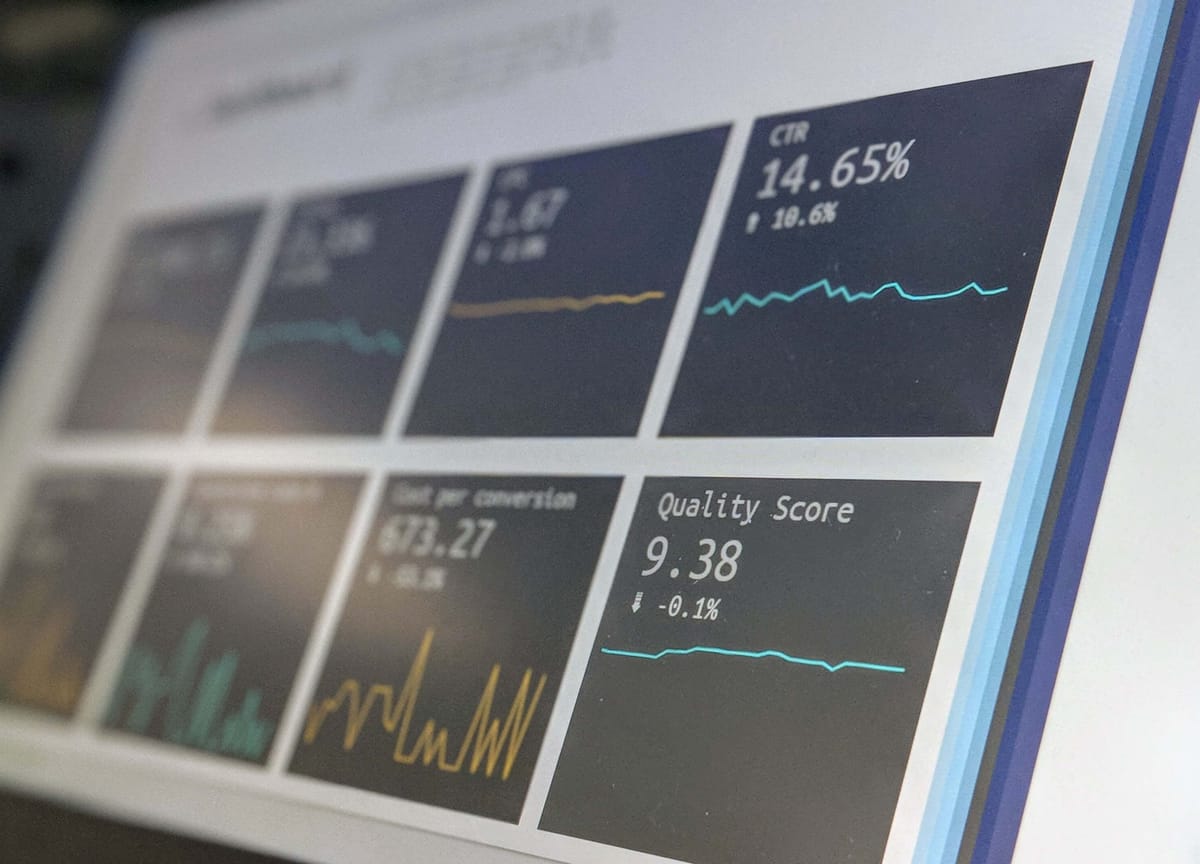SWOT analysis is a powerful tool in B2B marketing. It allows you to position your company within your market and make comparisons to competitors. It also enables you to make objective decisions on your strategies.
Most importantly, a SWOT analysis is a super simple four-way grid matrix that makes planning and decision-making way easier.
What is a SWOT analysis in marketing?
SWOT stands for:
- Strengths
- Weaknesses
- Opportunities
- Threats
Strengths and weaknesses are internal to your firm and allow you to identify what your company does well and where it may be lacking. Maybe your company has a great email marketing strategy but a poorer social media strategy, or vice versa.
On the other hand, opportunities and threats are external factors and allow you to identify the spaces where you could improve and where your company’s survival or profitability may be at risk. Usually, these relate to your competitors or other elements of the wider market or business environment.
This framework doesn’t need to be used alone though, don’t be afraid to use other models alongside SWOT. This can aid you in identifying the opportunities and threats in the wider environment.
Having a goal or objective when carrying out a SWOT analysis is also important. You might want to know what new campaign you should run next or if using a certain social media platform is actually driving sales.
Whatever insight you want to gain from your analysis, write it down and share it with other stakeholders so you can refer back to it.
There are a few steps to a successful SWOT analysis: Identifying, ranking, and responding. The remainder of this article will tackle each of these in turn.
Product Marketing Alliance has a free SWOT analysis template you can use right away. Download it here 👇

SWOT identification
When starting a SWOT analysis, it may be easier to tackle each section separately. This allows you to focus better and saves you from jumping between sections, which may lead to a scattered train of thought.
Having an established template is a good idea as it can make the process easier and less overwhelming.
Now that you have your lists set up and ready to go, it’s time to start your analysis – just remember to keep checking back to your goal.
Strengths
Strengths are things your company currently does well. You should include the things that stand out as clear strengths of your company but don’t forget to include smaller factors as well. All strengths – big and small – will help to give you a clearer image.
Strengths can be on a company-wide level or more specific to your department. On a company-wide level, your strengths are what you do really well, like customer service or operational efficiency, for example.
More specific strengths will likely be about your marketing capabilities, for which you’ll probably want to look at what you’ve done well in other campaigns. Taking both into consideration can be important in planning and developing new campaigns.
Here are some example questions to ask yourself:
- Was your email marketing working well?
- Did you increase engagement? By how much?
- Does your team communicate well? How well does your team communicate with the sales team?
- How was it different from competitors’ marketing?

All of these things may lead you toward strengths in your strategy. Now that you’ve identified your strengths, move on to your weaknesses.
Weaknesses
The method for this stage is similar to the last, but more focused on what your company could work on. What are your competitors doing better than you? Which aspects of your own capabilities need work? Being aware of these weaknesses will allow you to improve your marketing strategy appropriately.
Try not to be overly negative while taking this step, this isn’t blame game time – instead, be objectively critical. Don’t just beat yourself up by listing all the things that have gone wrong. This step is more about thinking through these weaknesses to get to the root of the problem (with the ultimate goal of resolving them).
For example, focus on what stops purchases from being finalized or what reduces your team’s productivity. This will be much more helpful than a dramatic declaration that your strategy is terrible and pointing fingers.
Now that you’ve considered the internal factors affecting your company, it’s time to consider the external environment, starting with opportunities.
Opportunities
Opportunities are things you can make use of in the future. Is there a new audience you could target? A major event coming up? A gap in the market you could exploit? Or maybe there’s a new social media platform you could use?
You should consider your goals and weaknesses and brainstorm ways to achieve your goals and resolve some weak points. PESTLE is a good model to help you with this step. You define and categorize the political, economic, socio-cultural, technological, legal, and environmental factors that could be opportunities.
It’s important to think of ways to stand out against your competition – don’t be afraid to go a little wild with your ideas. You might not use all the ideas but it’s a good creative exercise and they’re worth noting down for future reference. You never know when a great idea could come in handy.

Threats
It’s easy to feel, well, threatened by threats, but don’t panic! SWOT is all about objectively analyzing and evaluating these issues. In this column write down anything that might stop you from reaching your goal.
An example of a threat might be a strong competitor or new legislation that’ll affect your company.
Here are some example questions to ask yourself to identify threats:
- Are there any changes in the market that’ll hinder your plans?
- What obstacles is your company currently facing?
- Is there a technological innovation that’ll impact your product/service?
- What’s happening with your competitors? How will this impact your company?
Now that you have completed your four lists, it’s time to move on to the second stage: Ranking.
SWOT ranking
This stage is optional but valuable – it’ll allow you to see the importance of each element on the list. Ranking each SWOT will help you to prioritize changes.
It’s up to you how you rank each section, but below are some examples. Remember to consider your goal before deciding on a ranking method. You can generally get by just using a scale of 1-10 for your rankings.
Strengths:
- How strong are you at each item?
- How much does this matter to the customer?
- How far ahead of the competition does this position place you?
- To what degree does this help you reach your goal?
Weaknesses:
- How strong (or not weak) are you at each item? It may be helpful if this is the same scoring system as strengths for comparison (e.g. if you have something that’s below a certain threshold, it’s a weakness or, if above, it’s a strength).
- How difficult would it be to implement changes?
- To what degree does this stop you from reaching your goal or hinder performance?
Opportunities:
- How important is this opportunity?
- How much time/resources would be required to make use of this opportunity?
- How much of a benefit would this be toward your goal?
Threats:
- How important is this threat?
- How likely is this to happen?
- How easy would it be to avoid this threat?
- How much of a detriment would this be to your goal?
This should give you an idea of how you could rank your SWOT and what areas to prioritize. Now it’s time to put it all together into your matrix and get planning your next steps.
Responding to SWOT
With your SWOT grid in hand, it’s time to work out what it all means. There are four ways to look at items on the list, which will help you develop a response.
- Strength-Opportunity: Your company is strong in this area so it should be easy to take advantage of this opportunity. These are usually quick wins.
- Strength-Threat: This strategy involves making use of company strengths to avoid or diminish threats. This will help prevent threats in the future.
- Weakness-Opportunity: Look at opportunities you can capitalize on to improve upon or diminish your weaknesses. These may be harder to carry out but will be impactful.
- Weakness-Threat: This strategy is difficult but can be important in avoiding failure. It involves trying to minimize areas where you’re lacking to avoid or mitigate risks.
Your responses to each cross-section should be actionable and work toward your goal. Below is a basic example of how this may look.

What are the benefits of a SWOT analysis?
Now that you’ve gone through how to identify, rank, and respond to your strengths, weaknesses, opportunities, and threats, let’s take a look at how you can use your SWOT analysis to your advantage:
Leverage your assets
When you conduct a SWOT analysis, you identify what your company does best. This could be your brand reputation, unique technology, or customer loyalty. Knowing your strengths helps you leverage them to create more effective marketing strategies.

Address your limitations
No company is perfect, and understanding your weaknesses is key. SWOT analysis helps you pinpoint areas where you may be lacking, such as limited market reach or outdated technology. Identifying these weaknesses allows you to take steps to address them and prevent them from hindering your progress.
Capitalize on market trends
The business environment is full of opportunities, but recognizing them is when the real action can take place. SWOT analysis allows you to spot trends, technological advancements, and changes in consumer behavior that you can exploit to your advantage. This proactive approach helps you stay ahead of the competition.
Prepare for challenges
Every market has its threats, whether they’re new competitors, regulatory changes, or economic downturns. SWOT analysis helps you anticipate these threats so you can develop strategies to mitigate their impact. Being prepared for potential challenges ensures that you can navigate them more effectively.
Plan strategically
One of the biggest benefits of SWOT analysis is that it provides a structured approach to strategic planning. With a clear picture of your strengths, weaknesses, opportunities, and threats, you can develop a comprehensive marketing strategy that’s both realistic and effective.
Effectively allocate resources
Understanding where your strengths and opportunities lie allows you to allocate resources more efficiently. Focus your time, money, and effort on areas that will yield the best results, ensuring a higher return on investment.
Improve competitive positioning
Regular SWOT analysis helps you stay competitive. Continuously assessing your internal and external environments enables you to adapt to changes and improve your market position. This adaptability is fundamental if you want to maintain a competitive edge.
Enhance decision-making
Your decision-making process becomes more data-driven and strategic with a SWOT analysis. Basing your decisions on a thorough understanding of your company and business environment leads to more informed and effective outcomes.
Encourage team collaboration
Conducting a SWOT analysis often involves input from various departments within your organization. This collaborative effort ensures that different perspectives are considered, leading to a more holistic view of your business. It also fosters a sense of teamwork and shared goals.
Optimizing your marketing SWOT analysis
Integrating insights into your marketing strategy
Once you have your SWOT analysis, integrate its findings into your overall marketing strategy. Use the insights gained to inform your marketing campaigns, product development, and customer engagement strategies.
Leveraging digital tools for efficiency
Numerous digital tools are available that can help streamline the SWOT analysis process. Tools like SWOT Matrix or specialized templates in project management software can make it easier to organize and visualize your findings.

Keeping your swot analysis current
Markets, trends, and consumers are constantly changing, and so should your SWOT analysis. Regularly review and update your SWOT analysis to ensure that it remains relevant and useful. This ongoing process helps you stay responsive to new opportunities and threats and enables you to capitalize and adapt where necessary.
Using swot for team training and development
Use SWOT analysis as a training tool for your team. Involving them in the process helps them develop a strategic mindset and a deeper understanding of the business and market. This can lead to more innovative ideas and better execution of marketing strategies.
Final thoughts on SWOT analysis
SWOT analysis is a comprehensive approach to understanding and improving your business.
More than just a planning tool, SWOT analysis is an activity that works best when done as a team exercise, so you can work together to analyze everything and develop actionable plans. It can be even more beneficial to coordinate with other departments (particularly Sales), so you can get fresh perspectives on what fits under each category.
Regularly conducting SWOT analysis equips you with the insights needed to effectively navigate the complexities of B2B marketing and enhance your strategies.



 Follow us on LinkedIn
Follow us on LinkedIn




